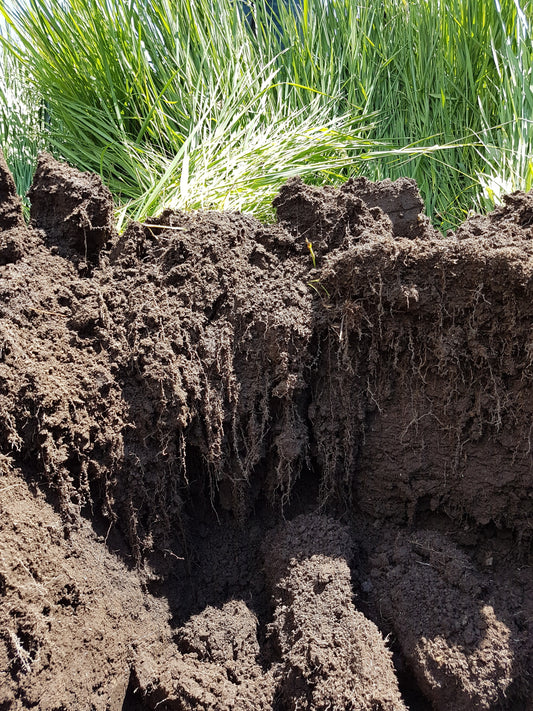Cover crops are gaining in popularity and can be a powerful tool to regenerate soil health but are they the answer for every situation? It is wise to consider their benefits, the potential problems and whether cover cropping fits with your goals.
Cover crops can have many benefits:
- Increase soil organic matter through incorporation back into the soil which will also help to improve soil structure.
- Reduce soil disturbance
- Cover crops also add nutrients to the soil as crop residues decompose. The carbon:nitrogen ratio of cover crops determines how quickly these residues break down.
- Deep rooted cover crops can help break up soil compaction as well as catch nutrients which may have moved beneath the root zone of shallow rooted plants, cycling these nutrients through the system and preventing them from being lost through leaching.
- Cover crops act as a living mulch and protect the soil from erosion, enhance water infiltration, conserve moisture and help to suppress weeds. Cover crops can be selected to smother, shade or outcompete weeds. Being a living mulch cover crops can help insulate soils against temperature extremes.
- Cover cropping keeps living plant roots in the soil which is important for the survival of soil life in particular mycorrhizal fungi. Plant roots which develop beneficial relationships with mycorrhizal fungi have improved uptake of water and nutrients from the soil. The fungal hyphae extend the reach of the plants root system in the soil.
- Increasing biodiversity in your farming system through cover cropping can create pest control benefits by attracting beneficial insects and can help break disease cycles.
- Adding diversity through cover crops also helps increase the total numbers and diversity of soil organisms. Diversity is the key to a healthy well functioning soil and ecosystem. Living covers help supply year round food for organisms that feed off root by products or that need the habitat provided on a residue littered surface.
- Increased profits through lower costs from reducing fertiliser, pesticides and herbicides.
- Improved rainfall use efficiency through improved water infiltration and reduced evaporation through soil cover also improves yields.
There are potential problems that can arise when you incorporate cover crops into your program. Preparing for these challenges in advance will increase the chances of success.
- Seed can be expensive
- There can be machinery challenges with sowing a range of seed types if you opt for a multispecies cover crop
- Management may be more complex
- Soil moisture is critical for success so cover cropping may be higher risk in low rainfall environments
- There can be the potential for cover crops to become a weed or be an alternate host of a pest or disease
Cover crop decisions begin with considering what your goals for cover cropping are and which of the benefits is most relevant for your limiting factor. Unless you address your most limiting constraints the benefits from cover crops will be less than optimal.
Send the signal for what you want to grow
Alongside these benefits, assess the risks thoroughly in relation to your climate and soil type. In low rainfall areas it can be more profitable and effective to step back and allow nature to do the work. Ian & Di Haggerty in Western Australia farm on sandy soils in a low rainfall area and found cover cropping risky due to the high risk of no germination moisture. Instead of sowing cover crops they have stepped back and let nature do the work. As a result long dormant native grasses re-establishing and creating the benefits of cover crops with none of the costs and a lot less work. What plants germinate, and when, is all about setting the scene to signal the plant species you want. This image is of Paspadillium, a native C4 grass which is returning to the Haggerty’s farm, notice that it looks as tho it’s been planted? It’s just following the rows where oats and worm extract were applied last season.
Your existing crop rotations and work schedule also determine whether you can take advantage of optimum timings in relation to cover cropping. You can build a rotation around these covers or you can add cover crops to your existing rotations. As with any new farming practice starting small will reduce the risks associated with trialling a new enterprise. You can begin cover cropping without substantially altering your cash cropping mix or planting times or buying new machinery and continually adapt your system as you go with the benefit of experience.
Consider if cover crops will assist you to create an environment where pests, diseases and weeds that are currently an issue will no longer thrive. Are there suitable species that are resistant to pests and diseases or that can keep ground covered and outcompete problem weeds. Decide the best way to utilise the biomass produced by cover crops in your system to bring about the benefits you seek. Will it be grazed, harvested for seed or fodder, roller crimped to provide a mulch for the next crop or green manured and worked back into the soil?
Consider which crops are most suitable for your soil types, climate zone and bring the benefits you are looking for in your cover cropping program:
Brassicas will help prevent erosion, suppress weeds and soil borne pests such as nematodes, alleviate soil compaction and scavenge nutrients. Tillage radish is well known for its deep roots that break through soil compaction.
Cereal grains have fibrous roots and are great for soaking up excess nutrients following a cash crop to prevent losses through leaching and promote good soil aggregration. Cereal rye can be particularly effective to prevent erosion, catch and cycle nutrients, assist with broadleaf weed control through competition and allelopathy, add organic matter to the soil.
Legumes provide nitrogen, attract beneficial insects, protect the soil from erosion and add organic matter to the soil. Cowpeas are great at suppressing weeds, fixing nitrogen, building soil and preventing erosion.
Buckwheat provides quick soil cover, suppressing weeds, is useful for rejuvenating low fertility soils and attracts beneficial insects.
It is more than likely that your perfect cover crop does not exist with every season, so the ability to plant multi species cover crops provides a wider variety of benefits than a single species. When you address your limiting factor the benefits from cover cropping have been shown to continue to accumulate even more over the years as soil improving effects accumulate.
Dr David Johnson at NMSU, is discovering that with fungal based composts and extracts, cover crops continue to provide long term benefits, and far out yield any crops using NPK. See his work for yourself!
References and Useful Cover Cropping Resources:
Milner-Smyth, Alex (2014) High plant diversity a must for effective cover cropping. SANTFA The Cutting Edge, Summer 2014.
Cover Crop Calculator: smartmix.greencoverseed.com great resource for seeing what crops will work in your zone. US program, but has applications for other countries.
SARE (2012) Managing Cover Crops Profitably. Third Edition. Published by the Sustainable Agriculture Research and Education (SARE) program, with funding from the National Institute of Food and Agriculture, U.S. Department of Agriculture
Stika, Jon. (2016) A Soil Owners Manual: How to restore and maintain soil health.
Graham Sait does some stellar blogs on regenerative Ag; here are 2 on cover crops:
http://blog.nutri-tech.com.au/cover-crop-secrets-1/
http://blog.nutri-tech.com.au/cocktail-cover-crops/
https://holisticmanagement.org/featured-blog-posts/5-magic-cover-number/
Dr David Johnson: presentation at 2018 https://www.youtube.com/watch?v=dmj611RfBgs




